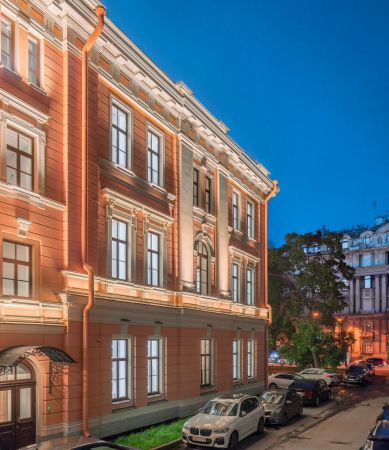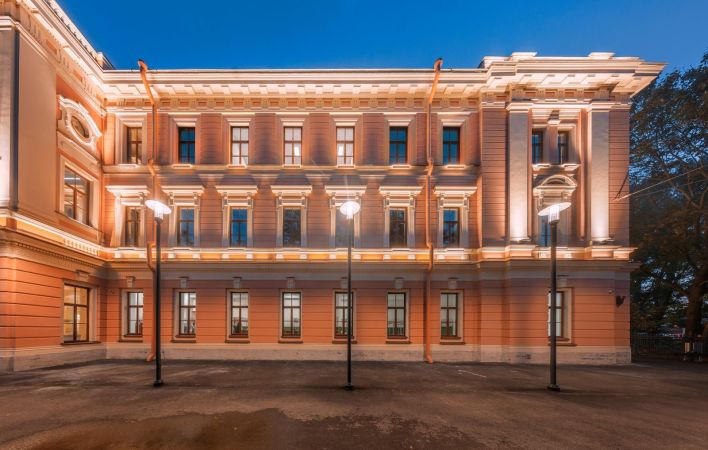About the project
RANEPA (The Russian Presidential Academy of National Economy and Public Administration) is a well-known socio-economic and humanitarian university in Russia and Europe, the national school of public administration, the founder of business education in Russia, and the chief scientific consultant to the authorities.
The largest regional campus of RANEPA in St. Petersburg, the Northwestern Institute of Management, is located in the former almshouse of the merchants Sadovnikov and Gerasimov at 66 Kamennoostrovsky Prospekt. The three-story mansion was built in the 19th century and is recognized as a cultural heritage site of regional significance. The central part of the building facing Kamennoostrovsky Avenue is designed in the style of French classicism. The building was completely reconstructed for modern use, the brickwork and glazing were restored, and the decorative plaster details of the façade were recreated based on the survived samples.
Lighting concept and tasks, implementation
The most optimal lighting solution for such classical-type architecture is an accentuating grazing technique, which was used for almost the entire campus building. The main emphasis is placed on the pilasters of the central and side projections using IntiSTARK spotlights with asymmetrical medium oval optics. Linear LINE luminaires with oval optics installed in window openings perform several functions at once: they create an accent on window openings and sandriks and softly and evenly illuminate the cornice. The cornice lighting unites the entire building into a single whole and creates a visually complete light picture. The upper cornice is compositionally supported by an interfloor cornice illuminated by the less powerful linear SLIM fittings with wide oval optics.
All architectural lighting is designed in a warm color temperature of 3000K to create a soft and cozy image of the building at night. The sustainable and economic approach was applied to the lighting of the lower part of the façade: the surrounding amenity lighting from the poles is quite enough for illuminating it, so no additional façade light was necessary.





